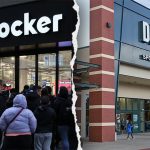Adobe reported Cyber Week, the five-day period between Thanksgiving and Cyber Monday, broke all sorts of e-commerce records this year with many U.S. consumers choosing to shop online to crowded stores amid COVID-19 concerns.
Data from Adobe, which uses Adobe Analytics to analyze one trillion visits and 100 million SKUs from 80 of the 100 largest retailers in the U.S., found that consumers spent $34.4 billion during this year’s Cyber Week, which represents a 20.7 percent year-over-year (YoY) increase. Unsurprisingly, Thanksgiving, Black Friday and Cyber Monday represented the bulk of total spend over the five-day period.
2020 Holiday Shopping Trends
According to Adobe’s analysis, a record $10.8 billion was spent online by the end of Cyber Monday, an increase of 15.1 percent YoY, making it the largest online shopping day in U.S. history and beating last year’s $9.4 billion record. Cyber Monday put the total season-to-date spending (November through Cyber Monday) over the $100 billion thresholds, at $106.5 billion (27.7 percent YoY growth), surpassing this milestone nine days faster than last year. Smartphones accounted for 41.1 percent of revenue during the five-day period, up 7.4 percent year-over-year.
Also of note, social media is driving more online sales.
Over the Thanksgiving weekend, social media drove one out of 10 visits to retail websites, a 17 percent YoY increase. The growth is important to watch as social media only drove 3 percent of online revenue. Organic search was the biggest winner during the period in increasing revenue share, at 11 percent growth YoY. Paid search continues to dominate both revenue share and visit share this year (25 percent and 24 percent respectively), but direct traffic is not far behind with 21 percent and 22 percent respectively.
Curbside pickup options saw strong growth with shoppers wanting to avoid crowds and shipping delays. “Throughout the remainder of the holiday season, we expect to see record sales continue and curbside pickup to gain more momentum as shoppers avoid crowds and potential shipping delays,” said Taylor Schreiner, director of digital insights, Adobe.
Cyber Monday
FOMO, (Fear Of Missing Out), hit shoppers hard during the final hours of Cyber Monday. During the “golden hours of retail” (7 pm to 11 pm PST), consumers spent $2.7 billion online, accounting for a quarter of the day’s revenue. The peak hour was between 8 pm and 9 pm PST which reached a purchasing rate of $12 million per minute.
On Cyber Monday, consumers realized some of the strongest discounts on computers (28 percent), sporting goods (20 percent), toys (19 percent), appliances (20 percent), and electronics (27 percent). Discounts are expected to lessen by approximately 5 percent to 10 percent across most categories in the weeks running up to Christmas.
Toys were a popular purchase during Cyber Monday with Lego sets, vTech-brand toys, scooters, and video games. Apple AirPods and Watches, HP and Dell computers, and Chromecast were also popular.
Curbside pickup saw a 30 percent growth YoY on Cyber Monday. The most preferred shipping option is one-day shipping (45 percent) followed by curbside pickup (37 percent).
“Cyber Monday continued to dominate the holiday shopping season becoming the biggest online shopping day in U.S. history, despite early discounts from retailers,” Schreiner said.
Black Friday
Consumers spent $9 billion online during Black Friday, up 21.6 percent from last year. This is the second-largest online spending day in U.S. history coming in behind Cyber Monday 2020.
U.S. consumers spent $6.3 million per minute shopping online on Black Friday — $27.50 on average per person. $3.6 billion was spent via smartphones — a 25.3 percent increase YoY, reaching 40 percent of the total online spend. In-store and curbside pickup increased 52 percent YoY.
Online shoppers got the strongest discounts on computers (28 percent), electronics (26 percent), appliances (20 percent), toys (17 percent) and sporting goods (18 percent) on Black Friday. The most in-demand toys on that day were Star Wars toys, Hot Wheels, NERF, and video games. For electronics, Apple AirPods, Air Fryers, and Fire TV were the most popular.
As online spend continued to build during Cyber Week 2020, certain product categories saw strong demand relative to October daily averages. These included toys (+294 percent) and personal care products (+278 percent).
Before Small Business Saturday, small retailers saw early success with sales 545 percent higher on Black Friday compared to an average day the previous month and a 211 percent increase in sales during the week compared to October. Based on Adobe’s accompanying survey data, 44 percent of consumers plan to support small and local retailers this holiday season with 38 percent saying they will make a deliberate effort to shop at smaller retailers throughout the holiday season.
Thanksgiving Day
Thanksgiving Day also hit a new record with consumers spending $5.1 billion online, an increase of 21.5 percent YoY (online sales hit $4.2B on Thanksgiving Day in 2019). As the mobile shopping experience continues to improve, close to half (46.5 percent) of all online sales came from smartphones—setting a new record.
Retailers that offer curbside pickup benefited from a 31 percent higher conversion rate of traffic to their sites. Adobe said it expects this to become more pronounced as Christmas approaches and free, and less expensive shipping options, continue to dwindle.
“While we did see a record-breaking Thanksgiving Day with over $5 billion spent online, it didn’t come with the growth rate we saw at the start of the pandemic,” Schreiner said. “While heavy discounts and promotions starting in early November, succeeded at getting consumers to open their wallets earlier, many consumers held off on some of their gift purchases until Black Friday and Cyber Monday in hopes of scoring the best deals.”
















